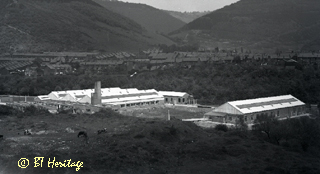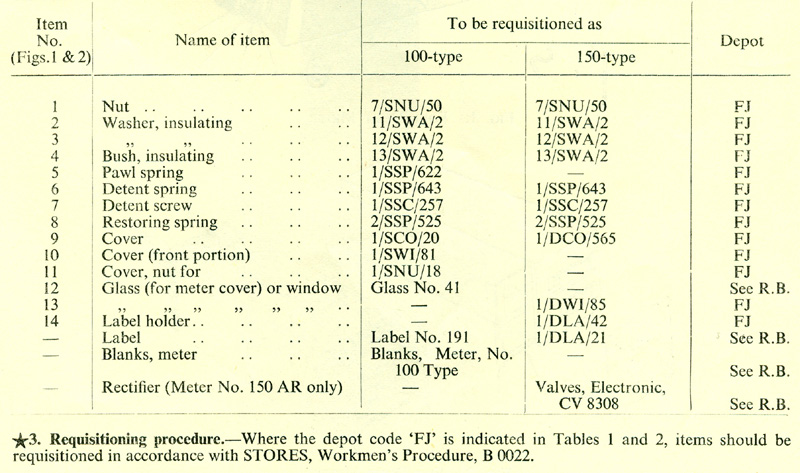a long history...
 |
In 1870 the General Post Office, by act of Parliament, gained control of the Telegraph Service in the UK. Two telegraph repair factories, one in Holloway (London) and the other in Bolton, formed the beginnings of the Post Office manufacturing division, later known as Fac D. |
From 1st January 1912 the Postmaster-General took over the system of the National Telephone Company and thus the General Post Office became the monopoly supplier of Telephone Service in the UK.
The ethos of the General Post Office (GPO) was for everything to be well-ordered, numbered, catalogued and described in great detail. As telephones and equipment were developed, each one was given a type number and all piece parts were numbered too! All of these were listed in the 'Rate Book', very much in a military style. For example, plain writing paper might have been listed as 'Paper, Plain, Writing for the use of'. This style was used on technical drawings and stores items, almost to the point that the complete Post Office organisation revolved around the supplies process.
See also GPO Telephones Timeline.
Engineering Instructions
 |
The GPO's attention to detail extended to process documents in the form of E.I.s, Engineering Instructions, recommendations on how to complete a task. |
 |
Circa 1969 these became T.I.s Telecom's Instructions and were not limited to engineering tasks. |
Piece parts and items ready 'for use in the field' were purchased from various manufacturers and then 'batch sampled' (quality controlled) before release into the system.
Studd Street
 |
Studd Street in Islington was originally the HQ of the GPO stores department. |
Of Telephones...
Historically, telephones were always rented to subscribers who paid quarterly for the supply of the Telephone Service to their premises. As telephones were originally hard wired into the line (no plugs and sockets!) any faults were repaired on site, usually by replacing the defective piece part, e.g. a frayed cord, a faulty capacitor, a broken case. Later, phones were 'changed out' to avoid a lengthy on-site repair. To support the thousands of rented telephones, all of the component parts had to be available from GPO stores. Also, as an early form of recycling, it made sense to return faulty (worn out) apparatus to the GPO factories to be refurbished (remanufactured to as 'good as new' standard) for subsequent re-supply to the rental base. This was cost effective as the range and choice of telephones remained very limited, such that subscribers kept the same model for ten, twenty or more years!
And Manufacturing...
Factory Division was an entire industry of manufacturing, repairing and refurbishing all manner of items for the vast Post Office empire.
Holloway
 |
The Holloway site covered Bovay Place, Hertslet Road and Tollington Road. |
| Birmingham | |
 |
The Birmingham Factories included sites at Fordrough Lane and Sherlock Street. |
| Enfield | |
 |
Enfield |
| Cwmcarn | |
 |
Cwmcarn |
Over the years, GPO Factories and Stores Divisions supported the rental base of telephones by supplying piece parts and undertaking the re-manufacture of returned items. Output from the Factories was geared to meet demand for products which couldn't be sourced elsewhere and/or required special modifications to satisfy Post Office specifications. It has been suggested that Post Office equipment was always over-engineered, but it was this quality which gave longevity and such reliability to all of its products.
|
Telephones, apparatus, switchboards and furniture were stamped and labelled with the following codes before being issued for supply:-
| CODE | LOCATION & LINE |
| FB | GPO Factory, Birmingham |
| FBR | GPO Factory, Fordrough Lane, Birmingham (Repaired apparatus, special cases only) |
| FH | GPO Factory - Holloway |
| FHA | GPO Factory - Holloway, London (Assembly) |
| FHB | GPO Factory - Holloway, London (Construction) |
| FHR | GPO Factory - Holloway, London (Repaired apparatus, special cases only) |
| FNB | GPO Factory - Edinburgh (Construction) (the N stood probably for ‘North Britain’) |
| FNR | GPO Factory - Edinburgh (Refurbish) |
| FW | GPO Factory - Wales (Cwmcarn) |
| FWG | STC Consumer Electronics - Cwmcarn (formerly BT factory) |
| FWR | GPO Factory - Wales (Cwmcarn) - (Refurbish) |
And Apparatus...
Relays, power units, electrical clocks and tools used in telephone exchanges were all supplied by the Factories and Stores process. For a typical electromechanical meter, there were more than 14 piece parts, all of which could be requisitioned. (See table below.)
 |
Each piece part has its own special code. The order depot is also coded. |
| CODE | LOCATION |
| FB | GPO Factory, Fordrough Lane, Birmingham |
| FJ | GPO Factory, Jubilee Works, Sherlock Street, Birmingham |
| FL | GPO Factory, Bovay Place, Holloway, London (later Bilton Way, Enfield) |
After Privatisation
Under the terms of British Telecom's Licence, any part of the company which manufactured telecommunications equipment was required to be transferred to a subsidiary company no later than July 1986. Thus in 1985, 'BT Factories' was reorganised into two subsidiaries, BT Fulcrum Communciations and BT Consumer Electronics.
The End
BT's evolving strategy in the competitive marketplace was to dispose of parts of its business which were outside of its growth area. With the rental base declining as customers chose to buy their own phones, there was no requirement to retain a (costly) telephone manufacturing division, and even less need for a fully fledged repair facility.
In 1990 Standard Telephones and Cables (STC) bought British Telecom's Cwmcarn based manufacturing business. Under this agreement, STC ran the final production line of the Vanguard telephone.
In April 1991, the remaining 25% of BT's telephone refurbishing business was sold to Fulcrum Communications Limited.
After 120 years (1870 to 1991) the Post Office/BT involvement in the direct manufacture and refurbishment of telegraph and telephone equipment, had ended.
References
www.postofficefactory.com
Booklet: Post Office Factories 100 Years of Service.
All logos and trade marks are the property of their respective owners and are used on the Light Straw site(s) for review only. Students and researchers are recommended to make their own independent enquiries as to the accuracy of the information contained therein.